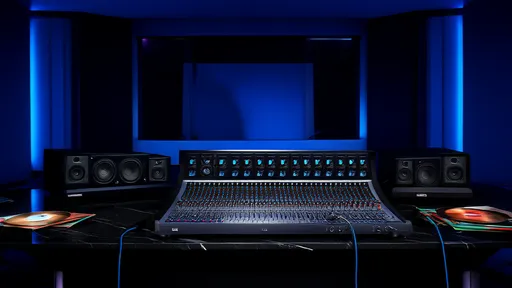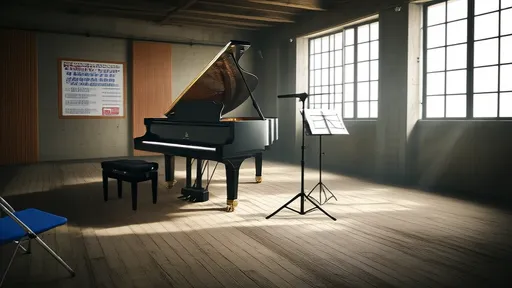The human voice is an extraordinarily versatile instrument, capable of producing a vast range of tones, textures, and emotions. Among the most fascinating vocal techniques is the seamless transition between chest voice (often referred to as "true voice") and head voice ("falsetto"). This skill, known as vocal register transition or mixed voice coordination, separates amateur singers from seasoned performers. Mastering this technique unlocks new expressive possibilities, allowing vocalists to navigate their entire range with fluidity and control.
Understanding the physiology behind register transitions is crucial for any singer aiming to improve their technique. The chest voice resonates lower in the body, engaging thicker vocal folds that produce richer, fuller tones. In contrast, head voice utilizes thinner fold vibration patterns that create lighter, more ethereal sounds. The challenge lies in bridging these two distinct mechanisms without audible breaks or sudden shifts in tone quality. Many vocal coaches compare this to changing gears in a manual transmission car – the shift should be smooth and barely noticeable to the listener.
Contemporary vocal pedagogy emphasizes the importance of proper breath support as the foundation for successful register transitions. Without consistent airflow, the larynx tends to rise during the passaggio (the transitional area between registers), causing tension and potential vocal strain. Professional singers often describe the sensation of "singing on the breath," maintaining steady pressure from the diaphragm while allowing the vocal folds to gradually thin as they ascend in pitch. This approach prevents the common pitfalls of pushing too hard in chest voice or becoming breathy in head voice.
The psychological aspect of register transitions shouldn't be underestimated. Many developing singers experience mental blocks when approaching their passaggio, anticipating the shift before it occurs. This anticipation often leads to physical tension that exacerbates register breaks. Voice teachers frequently employ visualization techniques, encouraging students to imagine their sound as a continuous stream rather than segmented registers. Some vocalists find success by conceptualizing their voice as moving forward (toward the "mask" of the face) rather than upward as they sing higher pitches.
Various musical genres approach register transitions differently. Classical singers typically aim for a seamless blend, minimizing any perceptible shift between registers. In contrast, many pop, rock, and R&B artists intentionally highlight the transition for stylistic effect. The characteristic "flip" into falsetto has become a signature sound in numerous hit songs across decades. Contemporary commercial music often celebrates the unique textural contrast between full chest voice and airy head voice, using these transitions as expressive tools rather than technical flaws to conceal.
Developing reliable register transitions requires targeted exercises. Lip trills and sirens are particularly effective for smoothing out the passaggio, as they encourage balanced airflow while preventing excessive vocal fold collision. Many vocal coaches recommend descending scales as particularly helpful – starting in head voice and descending through the transition zone often produces more natural results than ascending approaches. Over time, with consistent practice, the muscles involved in register adjustment develop muscle memory, making the transitions increasingly automatic.
The role of vowels in register transitions is often overlooked. Certain vowel sounds facilitate smoother shifts than others. The Italian [i] vowel (as in "see") tends to encourage head voice production, while [a] (as in "father") favors chest voice. Strategic vowel modification – subtly adjusting vowel shapes as one moves through the passaggio – can work wonders for maintaining consistent tone quality across registers. This technique is fundamental in classical singing but equally valuable for contemporary styles when applied with appropriate subtlety.
Technology has provided new tools for understanding and improving register transitions. Spectrographic analysis allows singers to visualize their formant frequencies, identifying exactly where and how register shifts occur. Some vocal coaches use real-time pitch monitoring software to help students navigate their passaggio with greater precision. However, these technological aids should complement rather than replace traditional ear training and physical awareness development.
Vocal health considerations are paramount when working on register transitions. Pushing chest voice too high or forcing head voice too low can lead to strain and potential damage. The most skilled singers recognize that register transitions aren't about eliminating natural vocal mechanisms but rather about developing control over how and when these transitions occur. Regular vocal rest, proper hydration, and avoiding singing through fatigue are essential for maintaining the vocal flexibility required for smooth register mixing.
Historical perspectives on register transitions reveal evolving pedagogical approaches. The bel canto tradition of the 18th and 19th centuries placed great emphasis on unifying the voice's registers, while 20th-century commercial music often celebrated register breaks as distinctive stylistic elements. Today's comprehensive vocal training typically incorporates both approaches, recognizing that technical mastery should serve artistic expression rather than constrain it.
The emotional impact of well-executed register transitions shouldn't be underestimated. When a singer moves effortlessly from a powerful chest voice to a floating head tone, it can create breathtaking moments of musical expression. Many iconic performances in music history feature register transitions used with dramatic intent – think of the climactic high notes in opera or the vulnerable falsetto passages in soul ballads. These moments resonate deeply with listeners because they mirror the natural fluctuations in human speech and emotion.
Ultimately, mastering register transitions is about expanding one's vocal palette. Like a painter learning to blend colors or a dancer perfecting fluid movements between steps, the singer develops the ability to move between vocal colors and textures at will. This skill takes time to develop – often years of consistent practice – but the artistic payoff is immeasurable. Whether aiming for classical perfection or contemporary expressiveness, control over register transitions remains one of the hallmarks of vocal mastery.

By /Aug 5, 2025

By /Aug 5, 2025

By /Aug 5, 2025

By /Aug 5, 2025

By /Aug 5, 2025

By /Aug 5, 2025

By /Aug 5, 2025

By /Aug 5, 2025

By /Aug 5, 2025

By /Aug 5, 2025

By /Aug 5, 2025

By /Aug 5, 2025

By /Aug 5, 2025

By /Aug 5, 2025

By /Aug 5, 2025

By /Aug 5, 2025

By /Aug 5, 2025

By /Aug 5, 2025

By /Aug 5, 2025

By /Aug 5, 2025